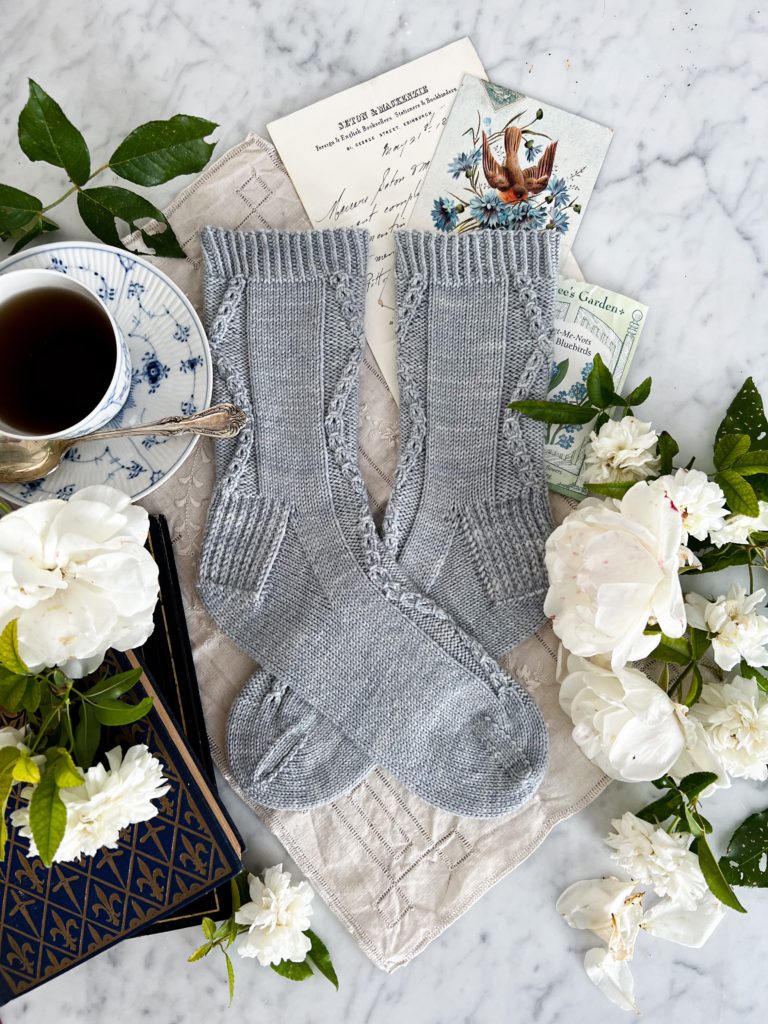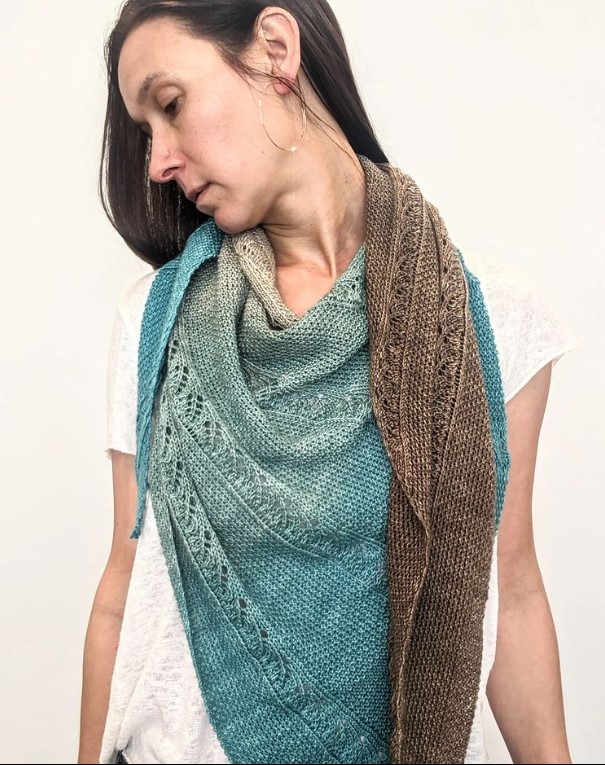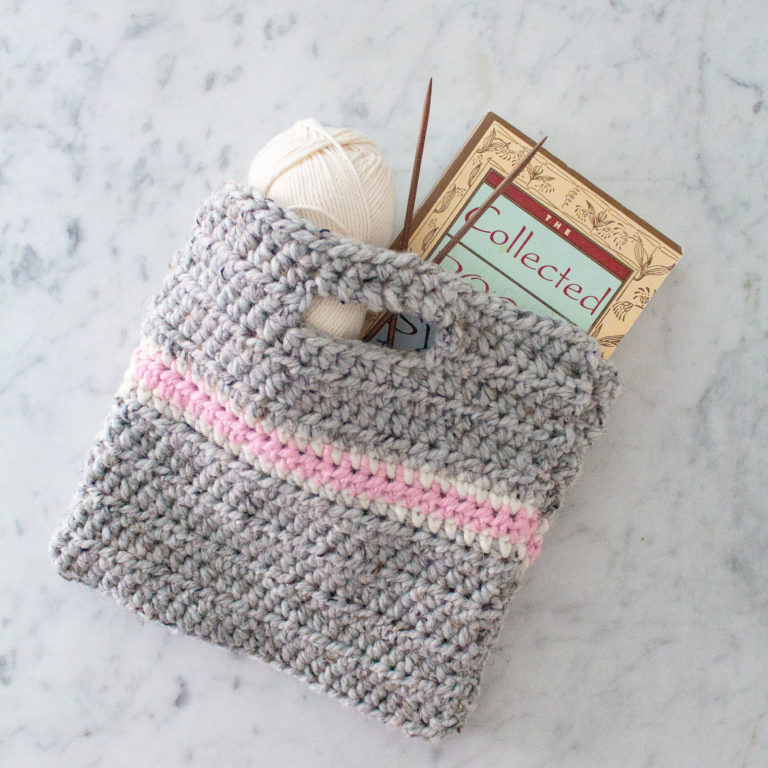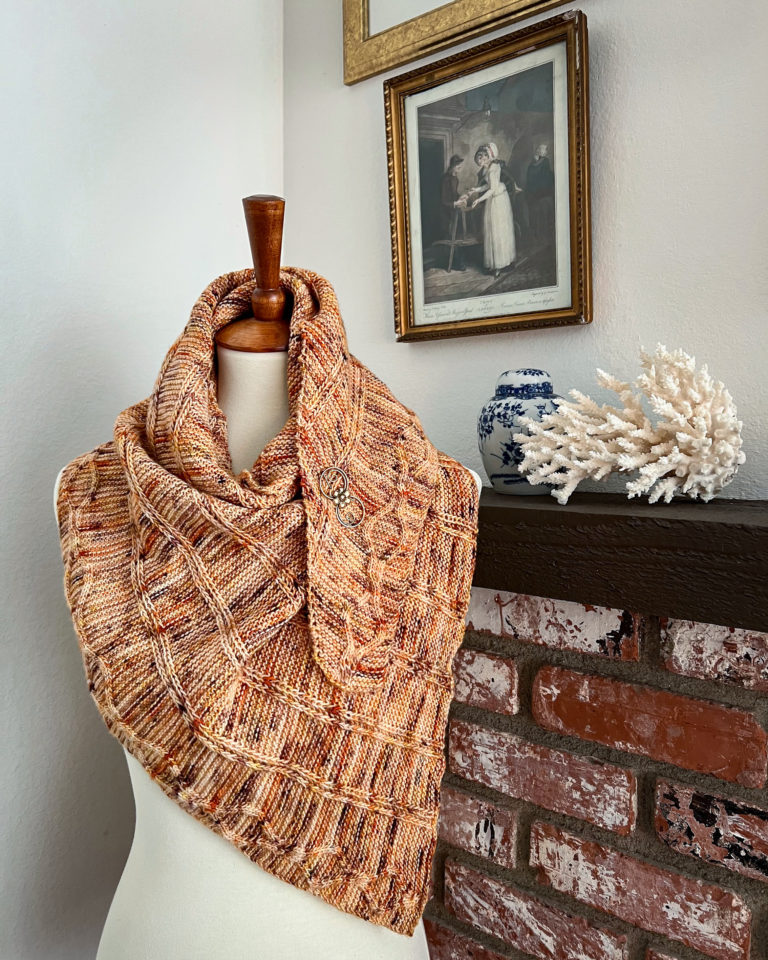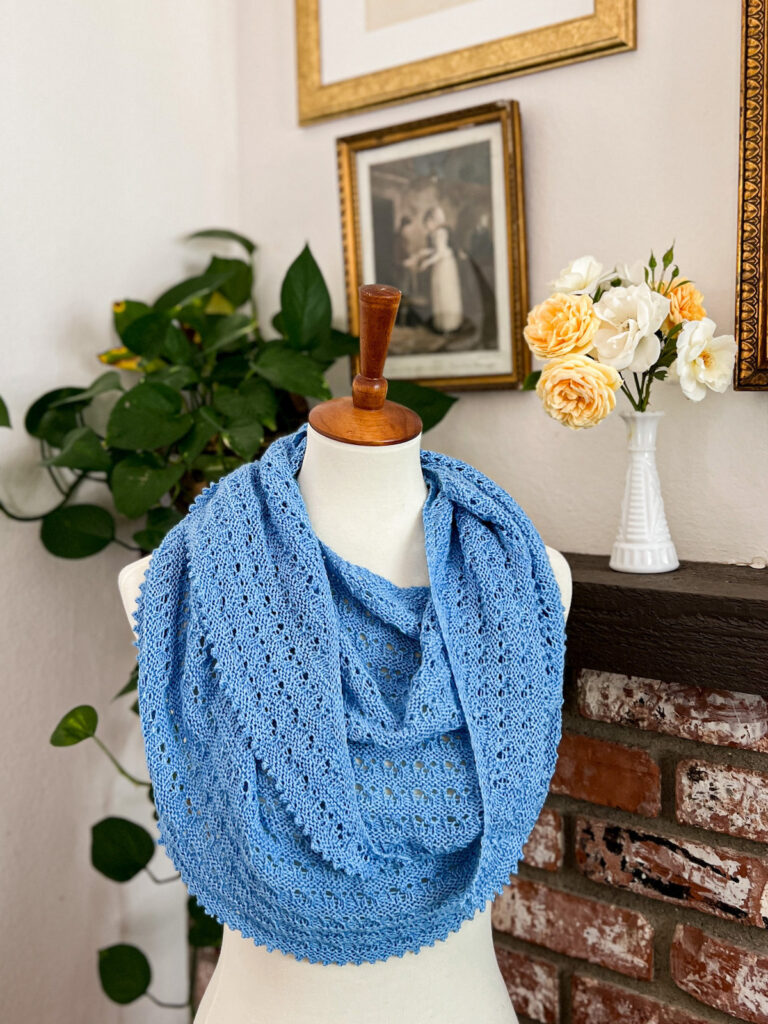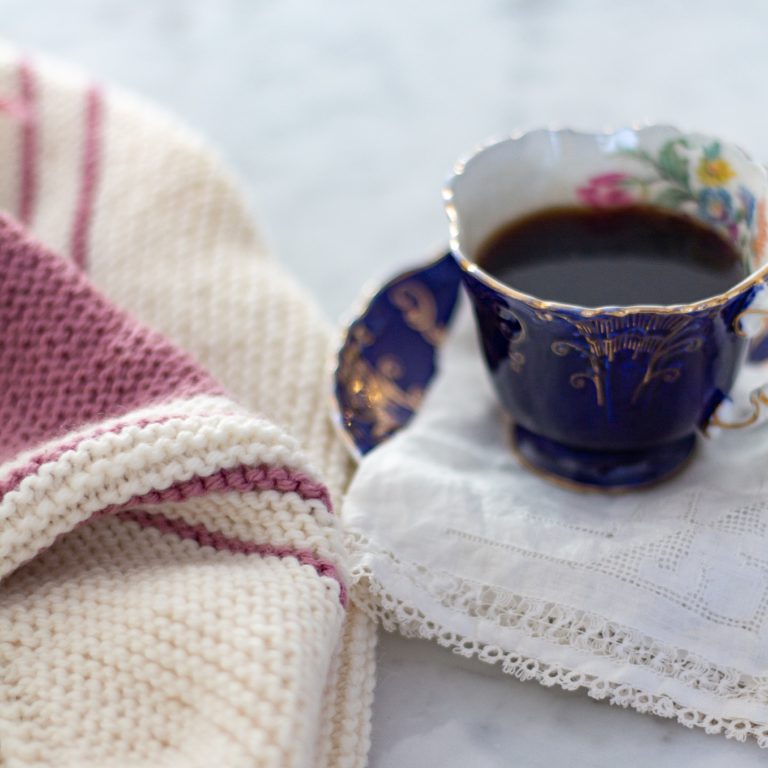
I read a blog post a while ago from the amazing Karie Westermann, where she described in detail her design process. I was so impressed by the love and care she poured into each design. The amount of planning, attention to detail, and meaning behind each of her patterns is incredible – and, I have to admit, completely foreign to me.
See, I am not such an organized designer.
Organization has never been my forte, and especially when it comes to my knitting, I tend to be a bit loosey-goosey with things. I tend to assume that most mistakes aren’t visible, that I can fix things if I need to, and that a good blocking can hide a multitude of sins. That’s generally true, but when I’m trying to create a design that I want others to be able to replicate, that scattered process can be a little hard to translate into writing.
When I’m starting a new design, I like to start with what I think is the most fundamental thing: the yarn. I get a hold of beautiful yarn that I want to make something with, and then I let the yarn decide what it wants to become. This has the benefit of being very flexible and allowing my imagination to make last-minute changes, but it also has some challenges. Here are five tips for working with what I’ll generously refer to as the, erm, improvisational approach.
1. Listen to the yarn. You can’t fight the yarn and what it wants to be. Don’t try. A fluffy, woolen-spun, aran-weight wool (like the delicious Thicc Base from Ocean by the Sea, which I’m using in an upcoming hat pattern) is going to knit up differently from a tidy, worsted-spun, silk-linen blend. If you get into a project and find that the yarn you’re using is just not a good fit for the stitches you chose, swap out one or the other – either get new yarn, or pick different stitches.
2. Get comfortable alternating skeins. One of the hazards you run when flying by the seat of your pants is that occasionally, you misjudge how much yarn you need. That happened to me with the lace edging on the Santa Cruz Shawl. I thought I’d need just two skeins of yarn, but it turned out I needed a third because I decided to increase the width of the edging. It had been months since I bought the original yarn and there was no way I could find more from the same dye lot, so I spent the second half of the edging alternating yarn every other row to make sure the mismatched dye lots didn’t show.
3. Take good notes as you go. It’s possible to reconstruct what you did after you finish knitting, but it’s so much easier to follow the notes you kept as you were working. It slows you down a bit, I know, but having done things both ways, I can promise you: it’s worth the extra effort. This is mostly irrelevant for the designers who write out their entire pattern before they ever start stitching, but we’re the sort of folks who wing it here, right? Having a pretty notebook helps encourage me to keep taking notes, and lately, I’ve had my eye on this pretty Snow & Graham floral thing.
4. Use lifelines. If you, like me, like to design as you go, you might find yourself ripping back every now and then. That’s no big deal if you’re not on a deadline, but putting in lifelines can save you from having to go all the way back to the very beginning. If you’ve never used a lifeline, check out this really helpful post from Nitzia Coto describing a few different ways to do it.
5. Develop some building blocks. Designing an item completely from scratch every single time can be exhausting, and it opens you up to making mistakes in the pattern-writing process. I like to have a few templates for my most commonly-used designs, and then I can riff off of those templates. That means I generally know how many stitches I like to cast on for a DK-weight sweater, how many for a worsted-weight hat, how many for a fingering-weight sock, and so forth. Since my gauge is pretty consistent, this keeps me from having to swatch for gauge every time I start a new project – and gracious, does this improvisational designer ever hate swatching.
6. Set aside some regular catchup time. Sometimes, I just get excited about a design and start zipping along. When that happens, all the systems I’ve put into place are useless. Before I know it, it’s been five hours, and I’ve got a massive hunk of knitting in my hands. What to do? That’s where having a regular catchup time comes in handy. I like to have a couple mornings a month where I can just sit down with my knits, reconstruct what I’ve done when I didn’t get a chance to take notes, write down pattern snippets before I forget them, etc. It is a great way to get things written down before I let it lag on too long and I forget what I did entirely.
Unfortunately, I don’t have any magic cures that can turn us all into hyper-organized, disciplined, careful designers. We can’t fight who we are. What we can do, though, is work with ourselves instead of against ourselves, and realize that the things that make us disorganized often also make us creative and curious.
I hope these tips and tricks can save you some grief in your design journey. I’ve learned from trial and error, and I hope to save you the same! Happy stitching.
(A previous version of this post appeared on Garden Wool & Dye Co.’s blog. Garden Wool & Dye Co. is run by my friend Anastasia Williams, an incredibly talented dyer devoted to using natural dye materials and locally-sourced, sustainably-raised yarns. Her gorgeous New Merino worsted was the yarn I used for the Miramar Scarf, and you can see how it just glows in the photos. It’s even prettier in person.)
Let’s stay connected!
Join my newsletter for 30% off all new releases, regular updates with helpful tips and tricks, first crack at registration for upcoming workshops, exclusive discounts, and more.
Join the A Bee In The Bonnet Facebook Group to participate in knitalongs and other fun community events
Come hang out with me on the A Bee In The Bonnet TikTok
Follow along on the A Bee In The Bonnet Instagram
Get inspired via the A Bee In The Bonnet Pinterest

